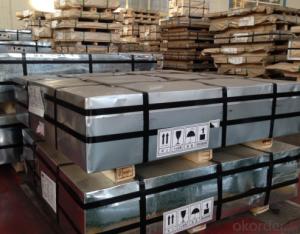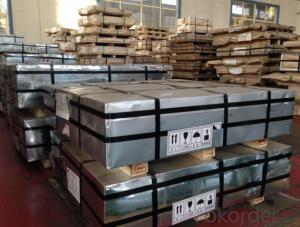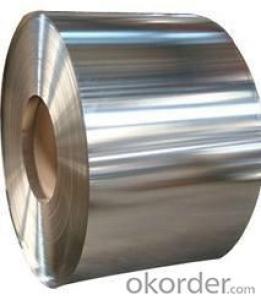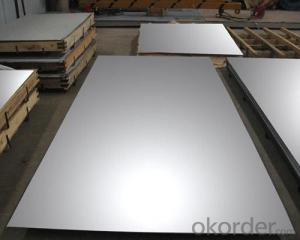Electrolytic Tinplate in Sheets and Coils for Cans Packing
- Loading Port:
- Tianjin
- Payment Terms:
- TT OR LC
- Min Order Qty:
- 25 m.t
- Supply Capability:
- 7000 m.t/month
OKorder Service Pledge
OKorder Financial Service
You Might Also Like
1.Structure of Electrolytic Tinplate in Sheets and Coils for Cans Packing Description
Due to Tinplate packaging`s good seal, nature, dark, robustness and unique decorative metal charm, it has a wide range of coverage in the packaging container industry,and common international packaging varieties. With a variety of CC tinplate material, DR materials, chrome plated and constantly enrich and promotion and development of packaging products and technology, tinplate packaging has promoted with innovation.
Because of its strong antioxidant and diverse styles, beautifully printed, tinplate containers are very popular and loved by customers, and they are widely used in food packaging, pharmaceutical packaging, commodity packaging, instrumentation, packaging, industrial packaging and so on.
With the continuous improvement of tinplate printing technology and processing technology, tinplate packaging has developed more widely.
2.Main Features of the Electrolytic Tinplate in Sheets and Coils for Cans Packing
Appearance – Electrolytic Tin Plate is characterized by its beautiful metallic luster. Products with various kinds of surface roughness are produced by selecting the surface finish of the substrate steel sheet.
Paintability and printability – Electrolytic Tin Plates have excellent paintability and printability. Printing is beautifully finished using various lacquers and inks.
Formability and strength – Electrolytic Tin Plates have got very good formability and strength. By selecting a proper temper grade, appropriate formability is obtained for different applications as well as the required strength after forming.
Corrosion resistance – Tinplate has got good corrosion resistance. By selecting a proper coating weight, appropriate corrosion resistance is obtained against container contents. Coated items should meet 24 hour 5 % salt spray requirement.
Solderability and weldability – Electrolytic Tin Plates can be joined both by soldering or welding. These properties of tinplate are used for making various types of cans.
Hygienic – Tin coating provides good and non toxic barrier properties to protect food products from impurities, bacteria, moisture, light and odours.
Safe – Tinplate being low weight and high strength makes food cans easy to ship and transport.
Eco friendly – Tinplate offers 100 % recyclability.
Tin is not good for low temperature applications since it changes structure and loses adhesion when exposed to temperatures below – 40 deg C.
3.Electrolytic Tinplate in Sheets and Coils for Cans Packing Images
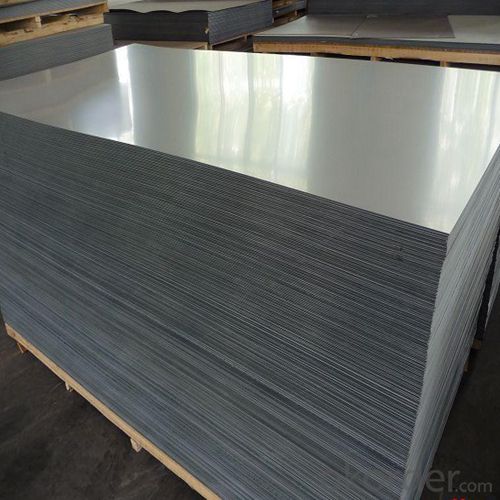
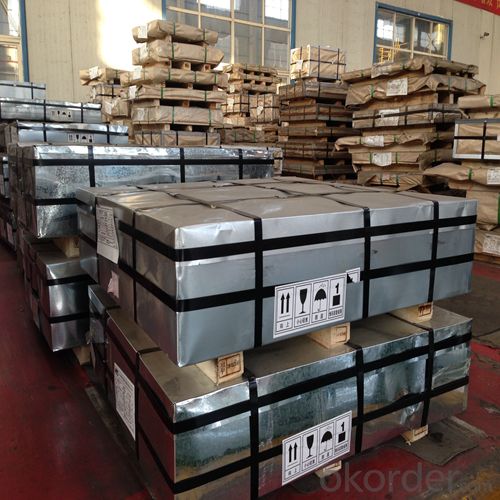
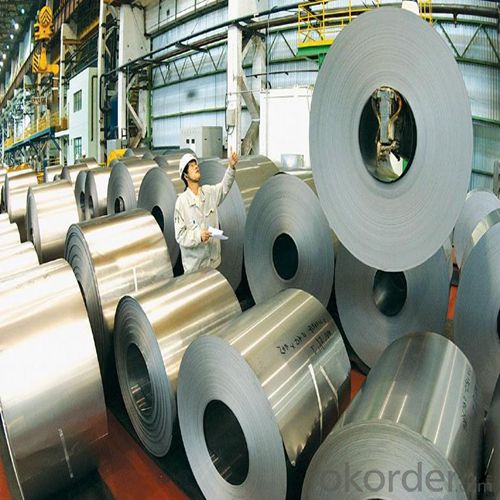
4.Electrolytic Tinplate in Sheets and Coils for Cans Packing Specification
Standard | ISO 11949 -1995, GB/T2520-2000,JIS G3303,ASTM A623, BS EN 10202
|
Material | MR,SPCC |
Thickness | 0.15mm - 0.50mm |
Width | 600mm -1150mm |
Temper | T1-T5 |
Annealing | BA & CA |
Coil Inner Diameter | 508mm |
Weight | 6-10 tons/coil 1~1.7 tons/sheets bundle |
Passivation | 311 |
Oil | DOS |
Surface | Finish,bright,stone,matte,silver |
5.FAQ of Electrolytic Tinplate in Sheets and Coils for Cans Packing
- How are the Electrolytic Tin Plates specified?
The Electrolytic Tin Plates are specified as per the steel base, extent of tempering, the coating weight, annealing method and the surface finish.
- How many types there are for base steels?
The base steels are of three types: Type MR, L, D
- Q:How does tinplate perform in terms of oxygen barrier properties?
- Tinplate has excellent oxygen barrier properties, making it an effective material for packaging applications.
- Q:How is tinplate coated with tin?
- Tinplate is coated with tin through a process called electroplating, where a layer of tin is deposited onto the surface of the tinplate using an electric current.
- Q:What are the different closure mechanisms for tinplate cans?
- The different closure mechanisms for tinplate cans include: slip cover lids, press-on lids, pull-tab lids, twist-off lids, and peel-off lids.
- Q:What is the purpose of coating tinplate?
- The purpose of coating tinplate is to protect it from corrosion and to enhance its durability and aesthetic appeal.
- Q:How does tinplate contribute to the durability of stationery products?
- Tinplate contributes to the durability of stationery products by providing a protective and corrosion-resistant coating. This coating helps to prevent moisture and other environmental factors from damaging the stationery items, ensuring they have a longer lifespan and remain in good condition for a longer period of time. Additionally, the strength and rigidity of tinplate make it resistant to bending or warping, further enhancing the durability of stationery products.
- Q:How does tinplate perform in terms of moisture barrier properties?
- Tinplate demonstrates excellent moisture barrier properties due to its inherent corrosion resistance and the presence of a thin tin coating on its surface. This coating acts as a protective barrier, preventing moisture from penetrating the tinplate and maintaining the integrity of the packaged product.
- Q:What are the main applications of tinplate in the aerosol industry?
- The main applications of tinplate in the aerosol industry include the production of aerosol cans, which are widely used for packaging and dispensing various products such as paints, lubricants, insecticides, and personal care items. Tinplate cans provide excellent barrier properties against moisture, gases, and light, ensuring the integrity and shelf life of the aerosol products. Additionally, tinplate's high strength and durability make it ideal for withstanding the pressure and handling requirements of aerosol packaging.
- Q:Can tinplate packaging be used for microwaveable products?
- No, tinplate packaging cannot be used for microwaveable products as it is a metal material and can cause sparks or fires in the microwave.
- Q:What are the typical cost considerations for tinplate packaging?
- The typical cost considerations for tinplate packaging include the cost of raw materials, manufacturing and labor costs, production volume, design complexity, customization requirements, transportation costs, and any additional finishing or coating expenses.
- Q:Can tinplate be used for microwaveable packaging?
- No, tinplate cannot be used for microwaveable packaging.
1. Manufacturer Overview |
|
|---|---|
| Location | |
| Year Established | |
| Annual Output Value | |
| Main Markets | |
| Company Certifications | |
2. Manufacturer Certificates |
|
|---|---|
| a) Certification Name | |
| Range | |
| Reference | |
| Validity Period | |
3. Manufacturer Capability |
|
|---|---|
| a)Trade Capacity | |
| Nearest Port | |
| Export Percentage | |
| No.of Employees in Trade Department | |
| Language Spoken: | |
| b)Factory Information | |
| Factory Size: | |
| No. of Production Lines | |
| Contract Manufacturing | |
| Product Price Range | |
Send your message to us
Electrolytic Tinplate in Sheets and Coils for Cans Packing
- Loading Port:
- Tianjin
- Payment Terms:
- TT OR LC
- Min Order Qty:
- 25 m.t
- Supply Capability:
- 7000 m.t/month
OKorder Service Pledge
OKorder Financial Service
Similar products
New products
Hot products
Hot Searches
Related keywords
